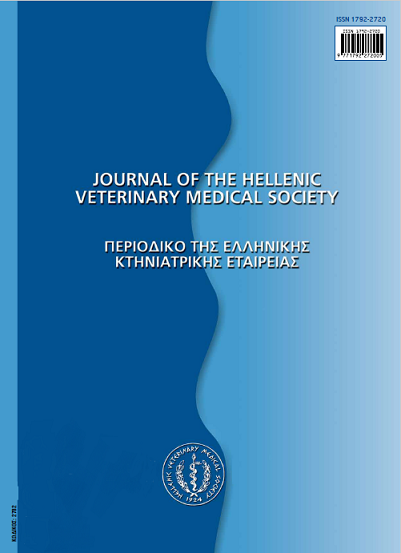Concurrent occurrence of Anaplasma phagocytophilum and A. marginale in bovine peripheral blood samples from southwest of Iran
Abstract
Anaplasma phagocytophilum and A. marginale are the most important tick-borne bacteria of veterinary and public health significance. Anaplasma phagocytophilum causes febrile disease in humans (human granulocytic-HGA) and animals. Anaplasma marginale is the aetiological agent of acute anaplasmosis, a bovine syndrome characterized by progressive hemolytic anemia associated with fever, weight loss, abortion, decreased milk production, and in some cases, death of the infected cattle. The present study was designed to investigate the prevalence of A. phagocytophilum and A. marginale in cattle from Khuzestan province, southwest of Iran. Samples were collected between March to August 2016. Farmed cattle were selected from the four geographic regions of Khuzestan province with the highest population of cattle herds: Behbahan; Dezful; Shushtar; and Ahvaz. Blood samples were collected from the jugular vein of 200 cattle Species specification was accomplished by specific Nested PCR according to amplification of the 16SrRNA gene. To identify A. marginale, semi-nested PCR product was cut with restriction endonucleases Bst 1107 I. The prevalence of the A. marginale infection (21.5 %) was higher than that of A. phagocytophilum (7.5 %), which was found in a mixed infection with A. marginale. Overall, in the present study 7.5% of cattle were infected with both A. phagocytophilum and A. marginale. Despite the healthy appearance of infected cattle, they can transmit Anaplasma to ticks and are potential continuous sources for maintaining and disseminating the organisms to the human and animals’ population. More epidemiological studies are needed to determine the vectors and reservoir animals for the Anaplasma species and to clarify the pathogenicity of A. marginale and A. phagocytophilum for humans and animals in Iran.
Article Details
- Zitationsvorschlag
-
BAHRAMI, S., HAMIDINEJAT, h., HAJI HAJIKOLAEI, M., & KAVIANIFAR, S. (2020). Concurrent occurrence of Anaplasma phagocytophilum and A. marginale in bovine peripheral blood samples from southwest of Iran. Journal of the Hellenic Veterinary Medical Society, 71(3), 2301–2308. https://doi.org/10.12681/jhvms.25076
- Ausgabe
- Bd. 71 Nr. 3 (2020)
- Rubrik
- Research Articles

Dieses Werk steht unter der Lizenz Creative Commons Namensnennung - Nicht-kommerziell 4.0 International.
Authors who publish with this journal agree to the following terms:
· Authors retain copyright and grant the journal right of first publication with the work simultaneously licensed under a Creative Commons Attribution Non-Commercial License that allows others to share the work with an acknowledgement of the work's authorship and initial publication in this journal.
· Authors are able to enter into separate, additional contractual arrangements for the non-exclusive distribution of the journal's published version of the work (e.g. post it to an institutional repository or publish it in a book), with an acknowledgement of its initial publication in this journal.
· Authors are permitted and encouraged to post their work online (preferably in institutional repositories or on their website) prior to and during the submission process, as it can lead to productive exchanges, as well as earlier and greater citation of published work.






